Protected Under
Antiquities Act 1975
31°35'20.7"N 74°18'57.3"E
![]()
On the UNESCO World Heritage Site List
Antiquities Act 1975
Jahangir's tomb uniquely lacks a dome, following his wish to adhere to Sunni tradition, and features a flat roof with four striking octagonal minarets.
The Best Time to Visit Punjab Province is Year long as it has bearable Cold winters and Hot Summers. However, Summers can get really Hot and precautions are recommended during Daytime visits.

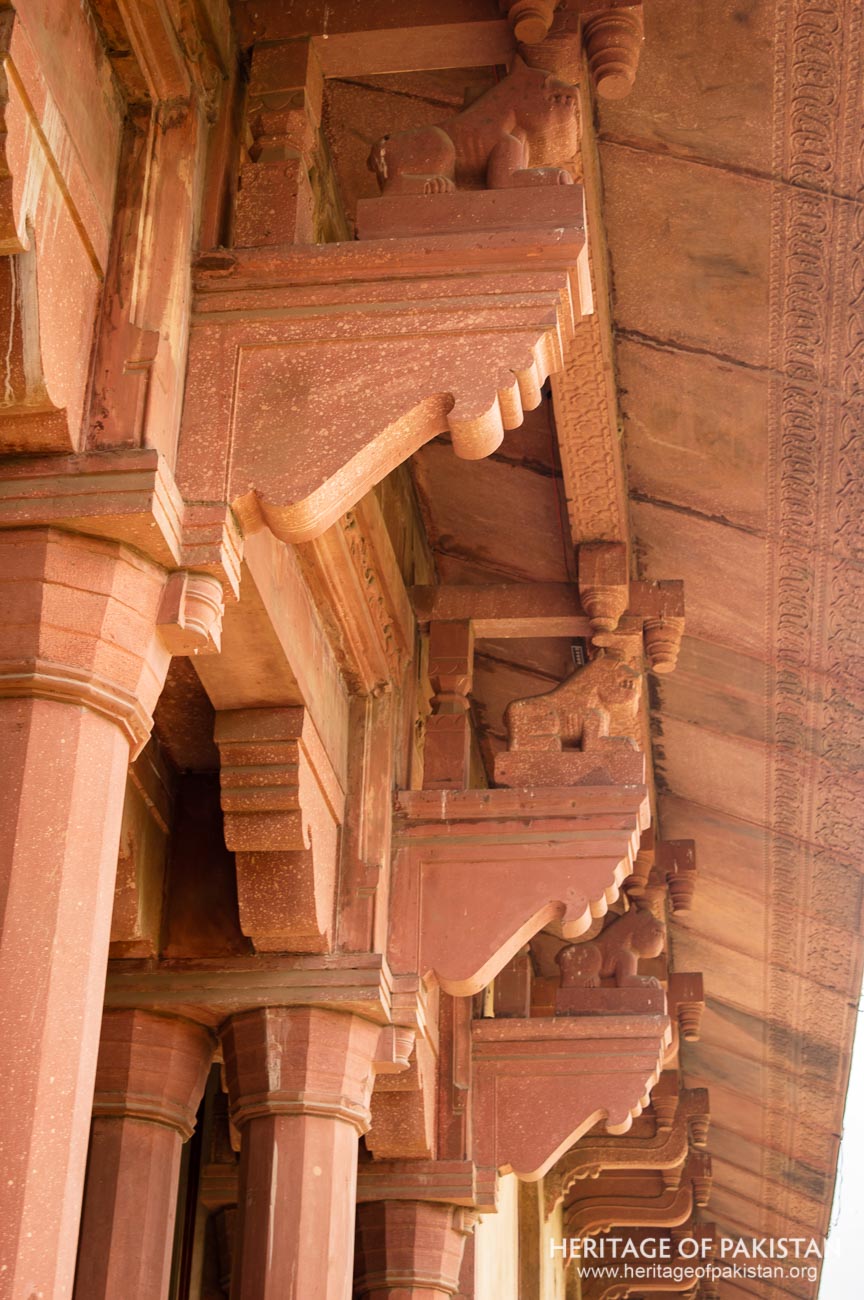
Jahangir’s Quadrangle is a significant section of the Lahore Fort associated with the Mughal Emperor Jahangir. Situated near the northern wall of the fort, it is an expansive courtyard surrounded by various structures that reflect the architectural legacy of the Mughal period. The quadrangle includes the Barri Khwabgah (Sleeping Chambers of Emperor Jahangir), the Seh Dero (Sehdari Pavilion), the Shahi Hamam, and the Daulat Khana-e-Khas-o-Aam. Together, these structures form an enclosed space centered around a classical Mughal Char Bagh-style garden.
The central courtyard is laid out in the traditional Chahar Bagh pattern with a square pool and marble mahtabi at its center, featuring fountains typical of Mughal landscape design. On the eastern side of the courtyard are dalans or porticoes constructed with intricately carved red sandstone columns and corbels shaped like animals. This feature reflects an architectural influence drawn from Hindu temples, particularly the use of animal-shaped brackets, which is uncommon in strictly Islamic architectural norms.
The origins of the quadrangle's construction are a matter of scholarly discussion. Some historians argue that the work was initiated during the reign of Emperor Akbar and later developed under Jahangir. The red sandstone animal brackets are often attributed to Akbar’s era, reflecting his known policy of syncretism and his preference for combining elements of Hindu and Muslim architectural styles. However, scholar Nazir Ahmed Chaudhry notes that the construction is more convincingly linked to Emperor Jahangir. He cites a reference from Waqiat-e-Jahangiri in which Jahangir explicitly mentions ordering the construction of these animal-shaped brackets in red brick.
The construction of the quadrangle was completed in 1618 during Jahangir’s reign, with its final design attributed to his architect, Abdul Karim Mamur Khan. Historical records indicate that the project cost seven lakh rupees and was executed between 1617 and 1618.
Over time, the quadrangle underwent various changes in function and structure, especially during the British and Sikh periods. During Sikh rule, the Barri Khwabgah was repurposed as a residential space and reportedly used as a harem by Maharaja Ranjit Singh. Under British administration, the sleeping chambers were converted into an armory and later a dispensary, while the pool area of the garden was filled in and repurposed as a badminton court. The entire quadrangle also served as a hospital during this period.
 Jahangir's Quadrangle, Lahore Fort
Jahangir's Quadrangle, Lahore Fort
In 1903, the Archaeology Department undertook a restoration project to return the site to its original Mughal form. During this restoration, the central fountain had to be excavated and reconstructed. This intervention restored many of the quadrangle’s lost features, reviving its historical and architectural integrity.
The spatial layout within the quadrangle places Jahangir’s Khwabgah in the north, the red brick dalans to the east, and the Diwan-e-Khas-o-Aam to the south. Adjacent to the sleeping chambers lies the Seh Dero or Sehdari Pavilion, further contributing to the architectural depth of the site.
Jahangir’s Quadrangle remains an important testament to Mughal architecture, blending aesthetic design with historical narrative and serving as a valuable example of the evolving use of imperial spaces across different eras.
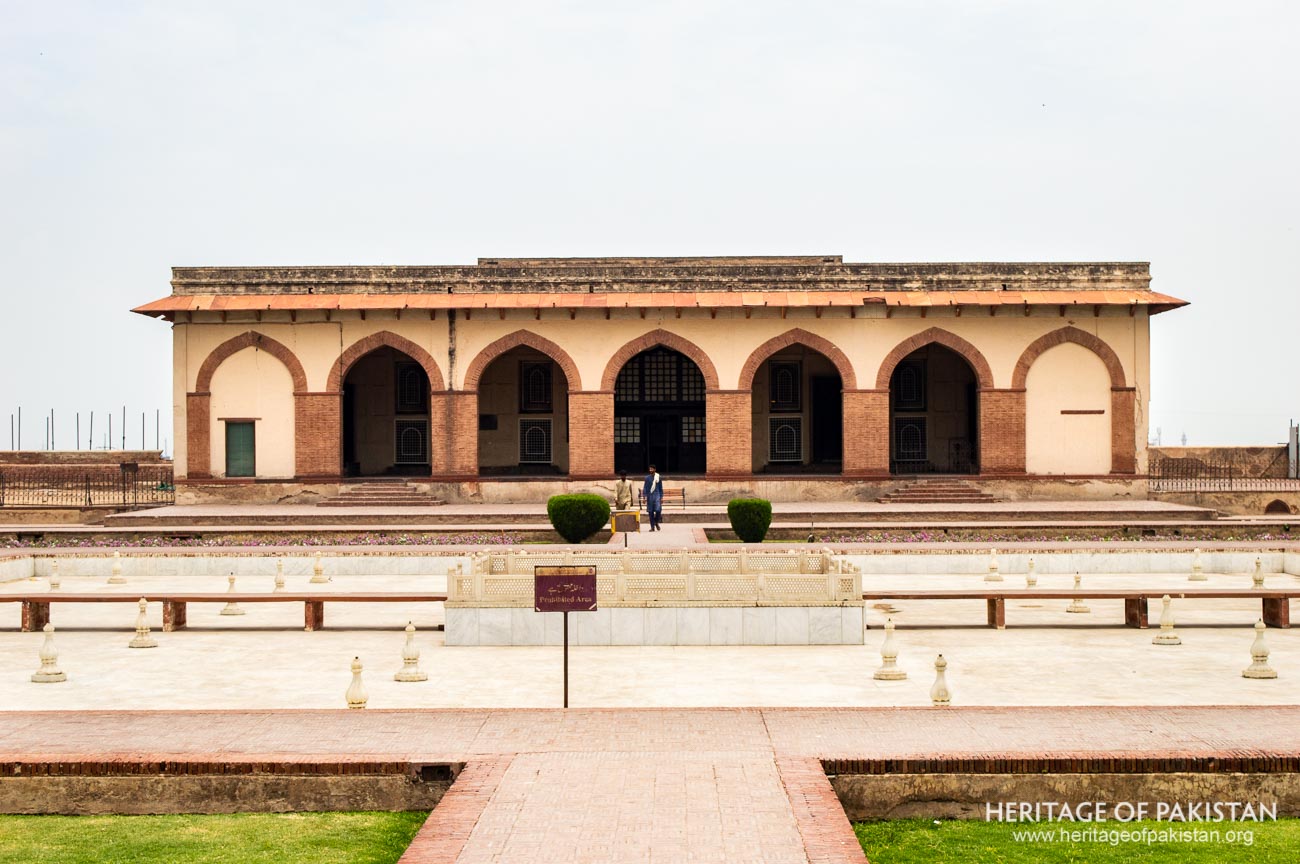 Sleeping Chambers of Jahangir, Quadrangle of Jahangir
Sleeping Chambers of Jahangir, Quadrangle of Jahangir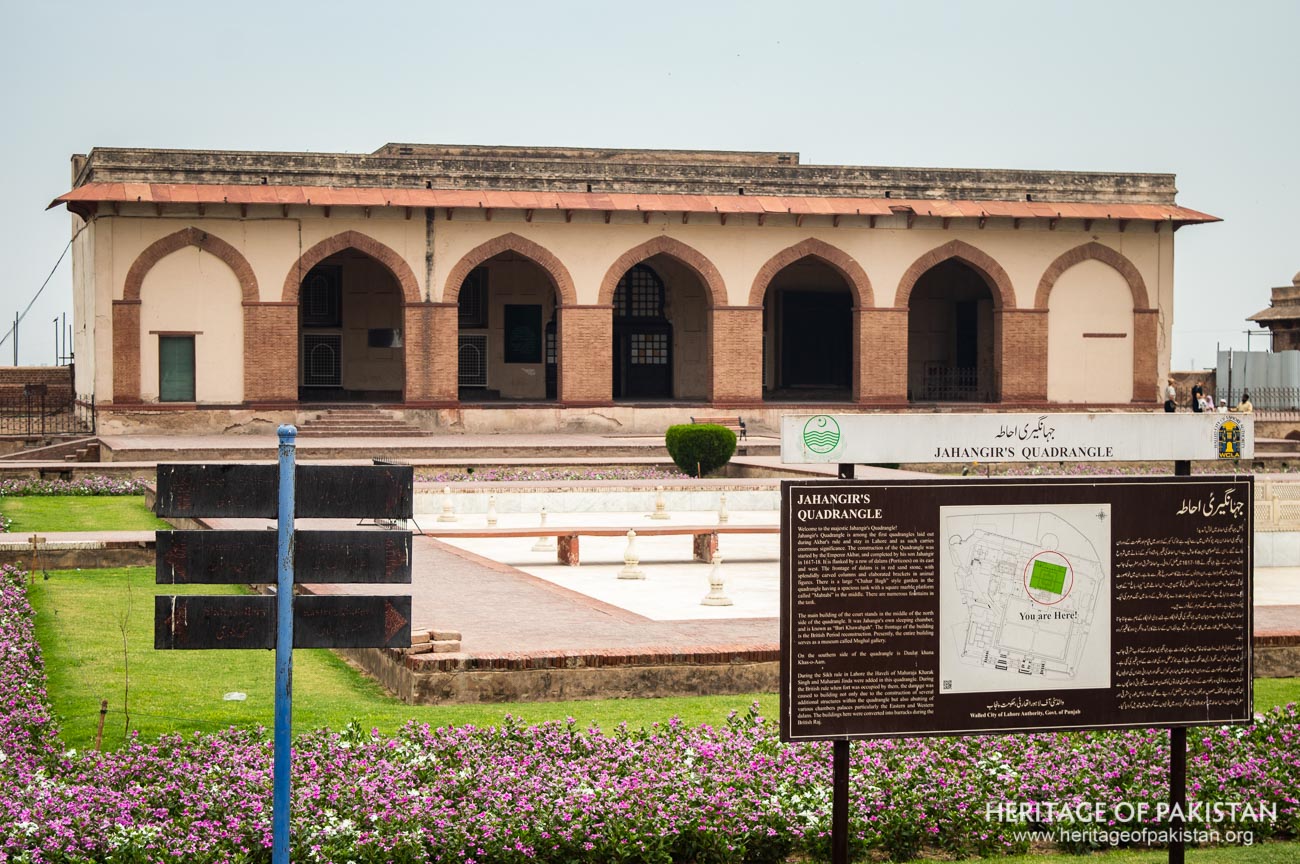
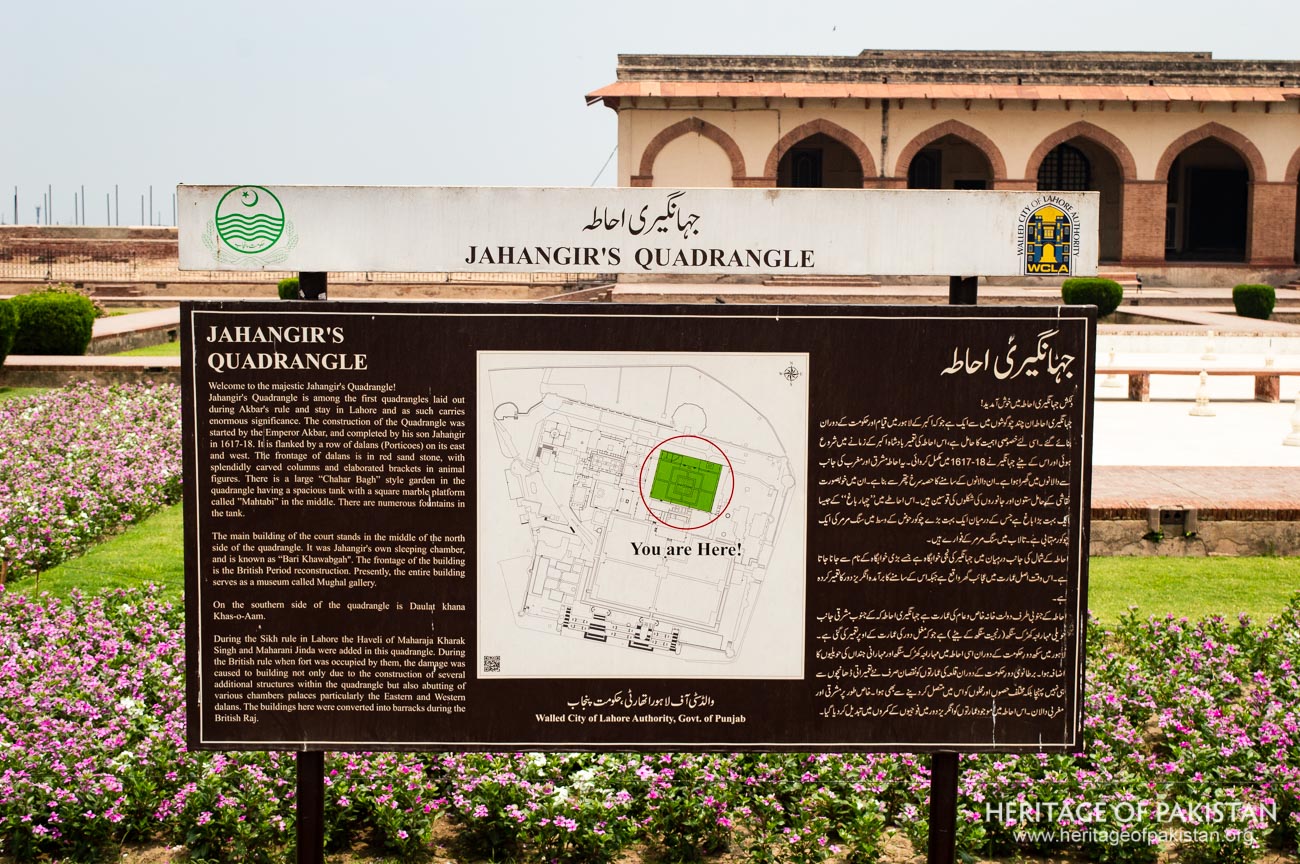
The central area of Jahangir’s Quadrangle in the Lahore Fort is occupied by a traditional Charbagh-style garden, featuring a large water tank with a square mahtabi (platform) at its center. This garden layout, with its classical Mughal symmetry and design, was noted by several visitors, including the German traveler Captain Leopold von Orlich, who documented his visit to the Lahore Fort in 1843. The tank is historically noted to have contained 32 fountains arranged around the platform, serving both aesthetic and functional purposes within the garden.
The architectural character of Jahangir’s Quadrangle is marked by a combination of local brick construction and decorative red sandstone elements. One of the notable features includes red sandstone consoles supporting the entablature, carved into animal forms such as elephants. These stylistic elements bear resemblance to details found in Hindu temple architecture, representing a regional influence within the broader Mughal design framework.
Within the quadrangle, several important structures define its layout and historical function. These include the Barri Khwabgah (the Sleeping Chambers of Emperor Jahangir), the Seh Dari Pavilion, the Shahi Hammam, and the Daulat Khana-e-Khas-o-Aam. The Barri Khwabgah, situated on the northern side of the quadrangle, was originally constructed as the emperor’s sleeping quarters. In its present form, the building houses the Mughal Gallery, which displays miniature paintings, coins, manuscripts, and royal decrees from the Mughal period.
Adjacent to the eastern side of the Barri Khwabgah lies the Seh Dari Pavilion. This structure, whose name translates to “three-door pavilion,” is attributed to the Sikh period. It features decorative fresco work and is believed to have served as the office of Faqir Syed Noor-ud-din, a trusted governor of Maharaja Ranjit Singh.
In the southwestern corner of the quadrangle is a room that functioned as a Shahi Hammam (royal bath) during the Mughal era. During the Sikh period, it was further embellished with colorful paintings and intricate frescoes. These decorations were subsequently concealed during the British administration.

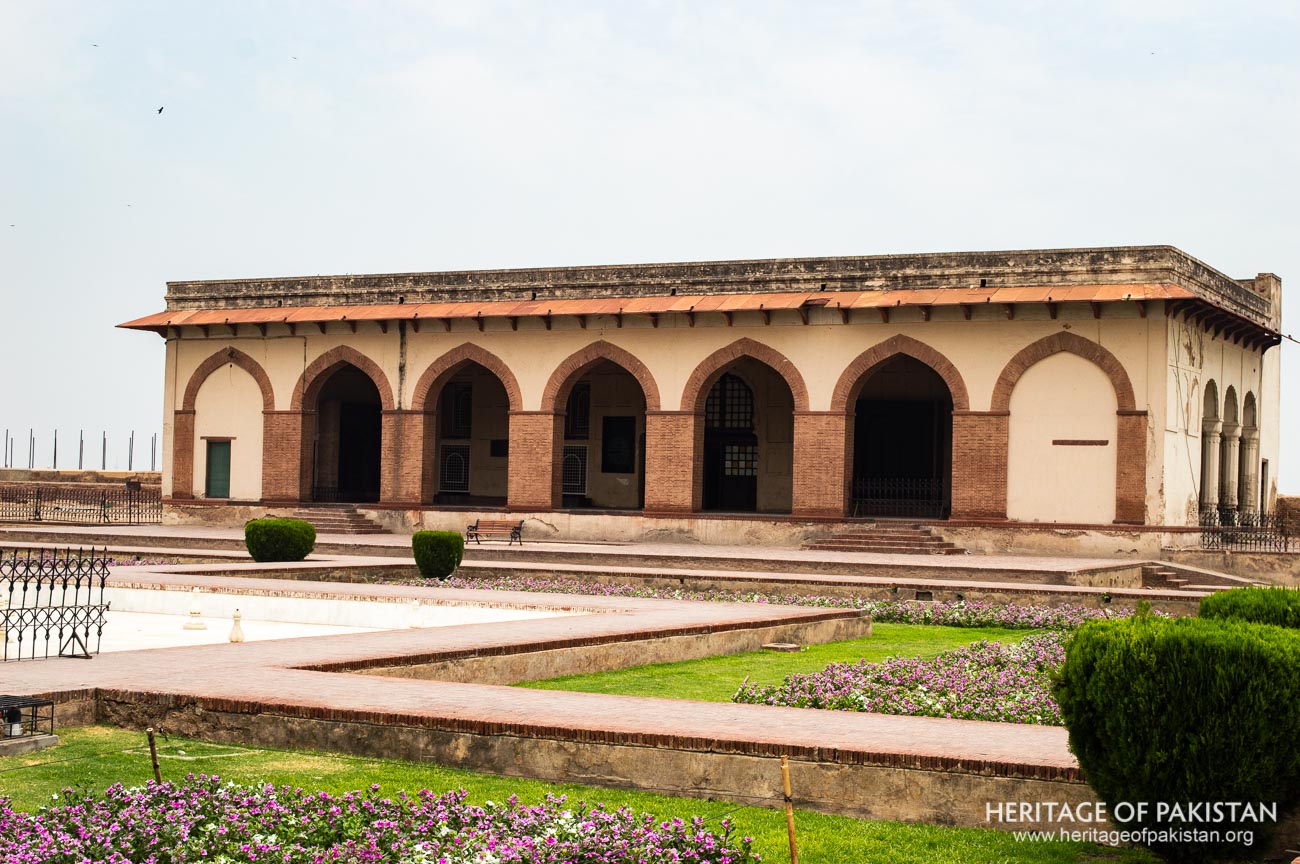
Over the course of time, various unplanned and structurally incongruent additions were made to the quadrangle. These later modifications included the covering of the central tank and the walkway, obscuring the original layout of the garden. When the fort was eventually transferred to the Department of Archaeology, these superfluous structures were dismantled to restore the quadrangle’s original design, revealing the square tank and its associated fountains.
Jahangir’s Quadrangle, through its architectural features and layered historical use, reflects a blend of Mughal sophistication, Sikh-era adaptations, and colonial interventions, providing insight into the evolution of the site across different periods of governance.
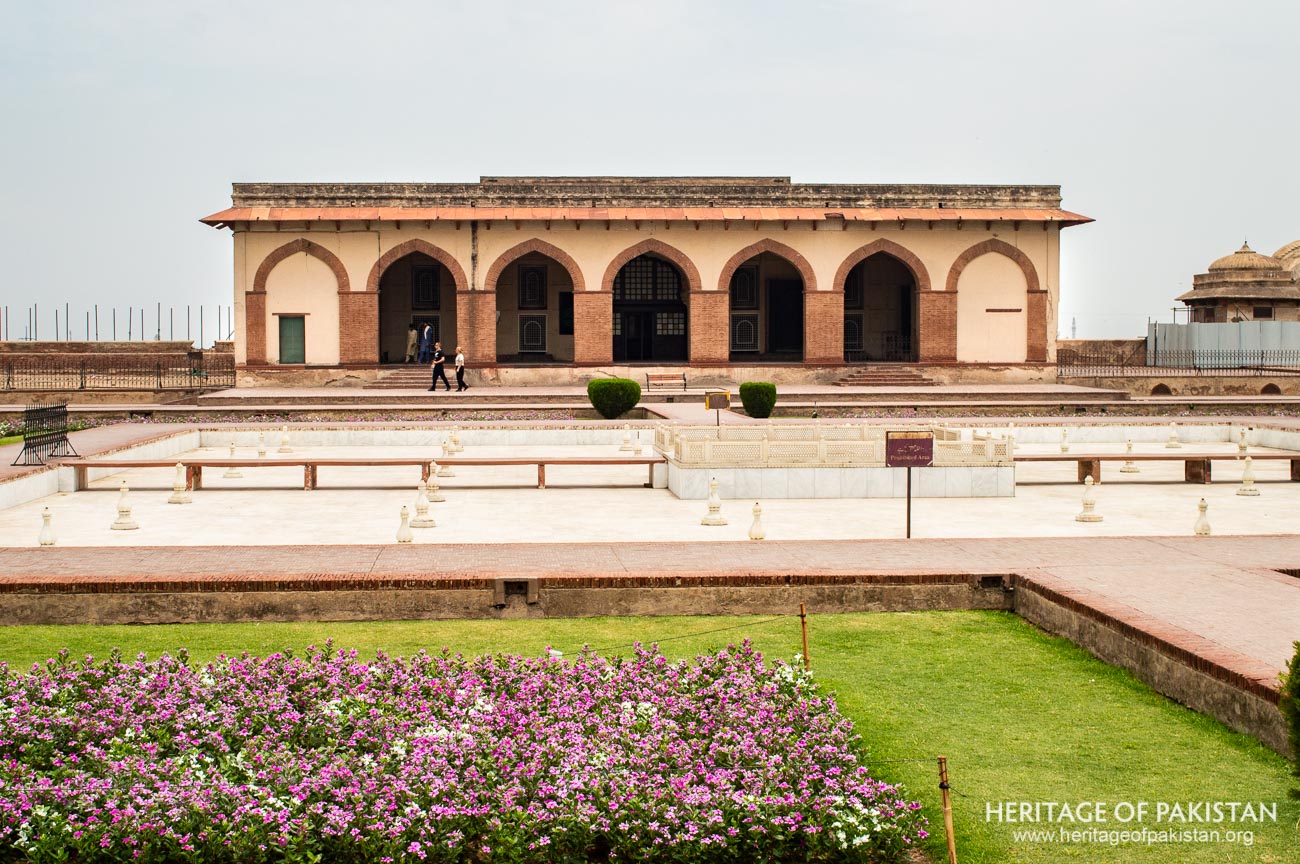

Discover the Jahangir's Quadrangle gallery and immerse yourself in photographs

All Photographs by Syed Noor Hussain and Sania Azhar.
All Rights Reserved. Photos may be used for Non-Commercial, Educational, Artistic, Research, Non-Profit & Academic purposes.
Commercial uses require licensing agreement.


Add a review